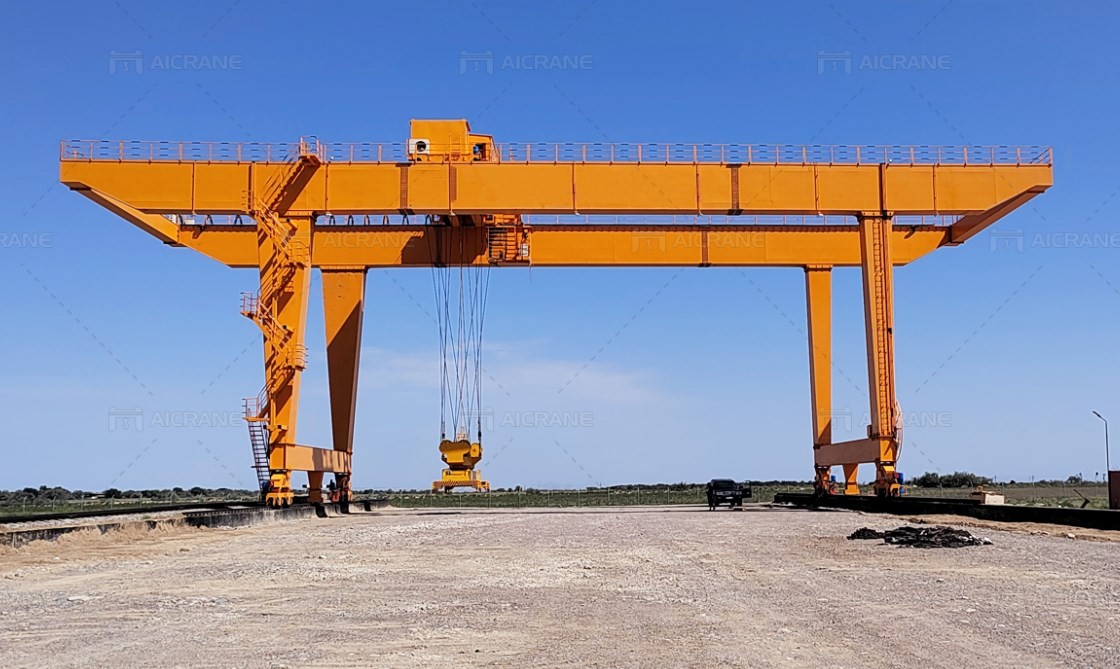
A Deep Dive into the Control Systems of Railway Gantry Cranes
Railway gantry cranes, with their remarkable ability to traverse along railway tracks, play a pivotal role in material handling across various industries. The efficiency and precision with which these cranes operate are owed to advanced control systems that empower operators to manage complex tasks seamlessly. In this article, we will explore the intricacies of how the operation of a railway gantry crane is controlled, shedding light on the technology that underpins their movements and functionalities.
The Heart of Control: Operator's Cabin
At the core of the operation lies the operator's cabin, a command center equipped with a sophisticated control panel. From this vantage point, operators have a comprehensive view of the crane's surroundings and can effortlessly manipulate its movements. The control panel typically features levers, buttons, and joysticks that correspond to different functions, allowing for precise control over the crane's various operations.

Movement Control: Navigating the Rails
The hallmark of a railway gantry crane is its ability to move along railway tracks. The movement control system is responsible for managing the crane's travel along the runway beams. Rail wheels mounted on the end trucks facilitate smooth motion, and the operator can control the speed, direction, and acceleration of the railroad gantry crane using the control panel.
Modern railway gantry cranes often come with advanced automation features, such as programmable logic controllers (PLCs) and computerized systems. These technologies enhance the precision of movement, allowing for automated positioning and route planning. The integration of sensors and feedback systems ensures that the crane can navigate its path with utmost accuracy, avoiding obstacles and maintaining a safe operating environment.
Lifting and Lowering Operations: The Art of Precision
The primary function of any crane is to lift and lower heavy loads, and railway gantry cranes are no exception. The control system orchestrates this dance of precision with the hoisting mechanism. The operator can manipulate the hoist's speed, control the ascent and descent of the load, and even implement micro-adjustments for delicate operations.
Safety features are paramount during lifting operations. Overload protection systems are integrated to prevent the crane from attempting lifts beyond its rated capacity. Limit switches play a crucial role in defining the upper and lower limits of the hoisting motion, ensuring that the crane operates within its designated parameters.
Coordination of Movements: Synchronization of Functions
The seamless coordination of various crane functions is a testament to the sophistication of its control systems. Railway gantry cranes are designed to perform complex maneuvers, such as simultaneous lifting and traversing. This requires a high level of synchronization between the different components, and the control system ensures that these movements are executed harmoniously.
Anti-collision systems add an additional layer of safety by preventing clashes between multiple cranes operating in the same vicinity. These systems use sensors and communication protocols to detect the presence of other cranes or obstacles, prompting automatic adjustments to avoid collisions.
Remote Control and Automation: The Future Beckons
In addition to traditional operator-controlled systems, the future of railway gantry crane operations is witnessing a rise in remote control and automation. Remote control allows operators to manage the crane from a safe distance, providing flexibility and improved visibility. This is particularly advantageous in environments where direct operator presence might pose safety risks.
Automation, driven by artificial intelligence and machine learning algorithms, is gradually becoming a reality in the realm of material handling. Automated gantry cranes can execute predefined tasks with unparalleled precision, reducing the dependency on human intervention for routine operations. These systems can optimize movements, minimize downtime, and enhance overall operational efficiency.
Safety First: Emergency Systems and Fail-Safes
The control systems of railway gantry cranes are not only about enhancing efficiency but also prioritizing safety. Emergency braking systems are integrated to bring the crane to a swift halt in case of unforeseen circumstances. These systems are designed to respond instantaneously, mitigating the risk of accidents.
Fail-safe mechanisms are crucial components of the control system, ensuring that in the event of a malfunction or power failure, the crane reverts to a safe state. These fail-safes prevent unintended movements and contribute to the overall reliability of the crane.
Maintenance and Diagnostics: Ensuring Reliability
Regular maintenance is essential to keep a railway gantry crane operating at peak performance. Control systems often include diagnostic features that aid in the proactive identification of potential issues. This predictive maintenance approach allows for timely interventions, reducing downtime and extending the lifespan of the crane.
Conclusion: Precision in Motion
In conclusion, the operation of a railway gantry crane is a symphony of precision, orchestrated by advanced control systems. From the operator's cabin to the intricate network of sensors and automated functions, every aspect is designed to maximize efficiency and safety. As technology continues to advance, we can expect even more sophisticated control systems, ushering in a new era of precision in material handling. Railway gantry cranes, with their ability to seamlessly navigate tracks and handle heavy loads, stand as a testament to human ingenuity in the realm of industrial machinery.